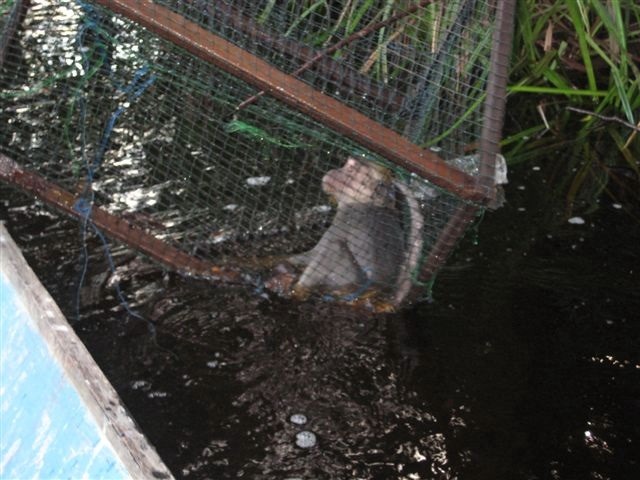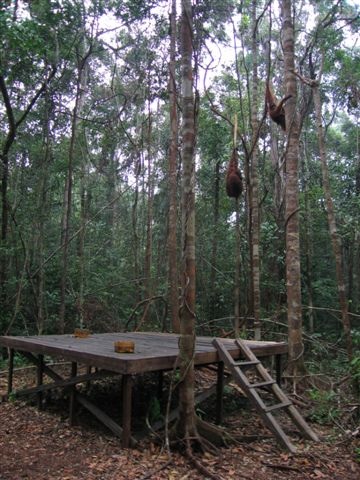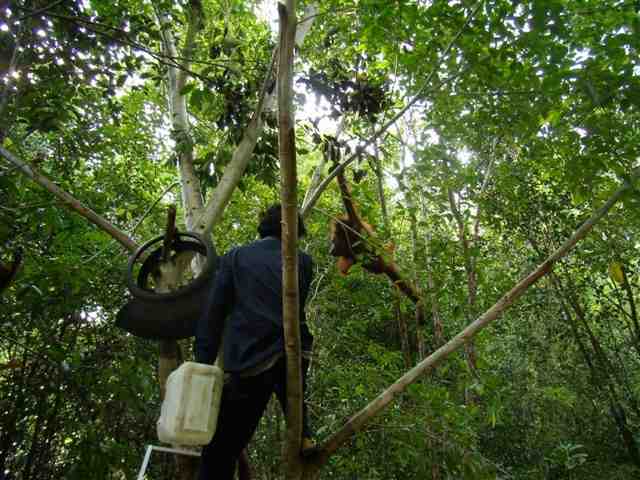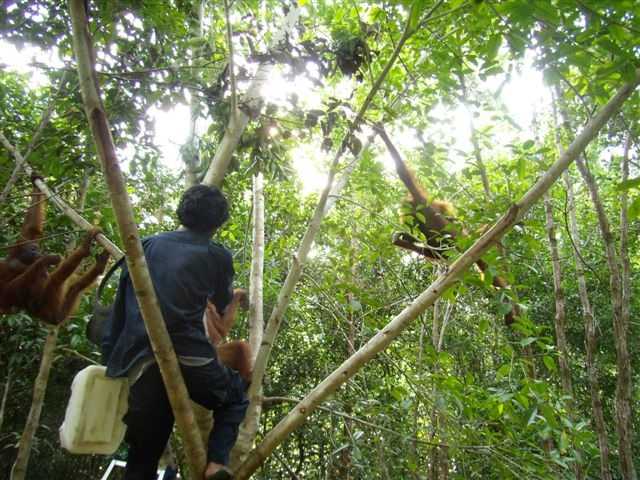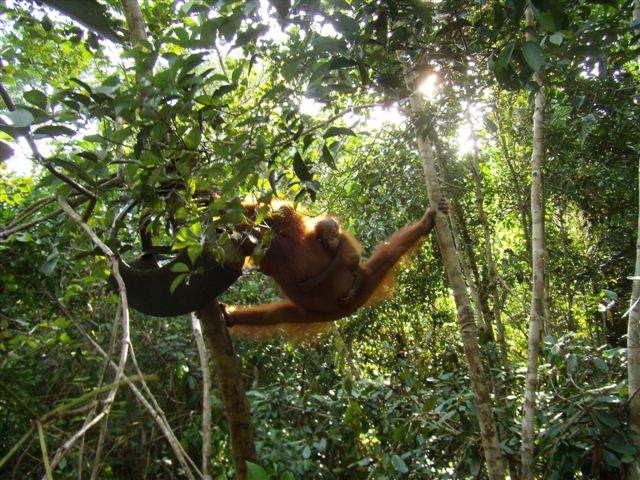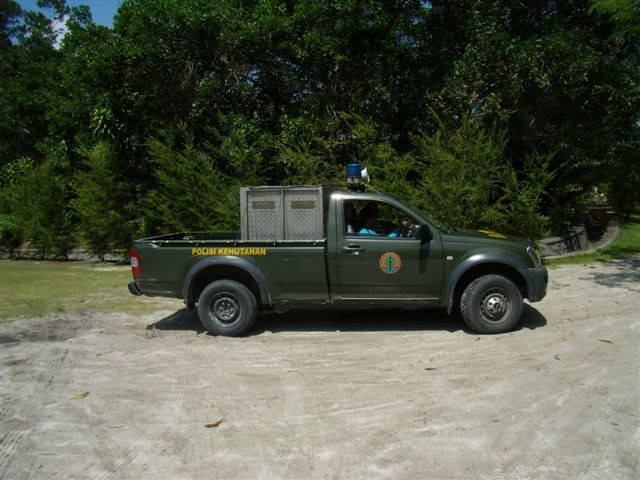Releasing caged wildlife is rarely anyone’s idea of fun. Panic-stricken animals tend to lash out and they don’t have claws, teeth and talons for nothing. Which is why, yesterday, finding an eagle, a snake and two macaques caught in fish traps provided a challenging finish to the day. As always, I must apologise for the photos; but this time we did have a good excuse; we were all a bit too busy to take photos. So, thank you Rene (a peat forest researcher) for taking the ones below. The fish traps were made of a wooden frame wrapped in netting with an inverted slit through which fish can enter but can not escape. Because the water level in the Mangkung River, the Lamandau Wildlife Reserve, has dropped so much the traps were exposed and the fish inside had obviously tempted the monkeys and the crested-serpent eagle in for an easy meal. Certainly, I have never seen animals caught in them before.
Jak, the Lamandau Patrol Manager and I tackled the eagle first, only to find there was a small python in the trap as well. I was certain that as we cut away the netting the eagle would either peck or slash with its talons, which were wrapped in the netting. Amazingly, once the roof was cut away the bird freed its feet and flew out right in front of our faces, without scratching either of us.
Crested serpent-eagle caught in a fish trap (photo by Rene Dommain).
The python was half way through the netting but having gorged on the trapped fish had a bulge three quarters of the way down its body, which would not fit through the mesh. Jak was all for leaving it and I have to say as its head twisted around I thought he had a point. However, as it was, the snake would be a sitting target for the next eagle to come along. So trying to keep the sharp edge away from its skin, I slid my knife in between the snake and the netting and cut it free. Great, we were now in the water with a python and neither of us wanted to think about crocodiles!
Juvenile macaque caught in a fish trap - once freed he swam away (photo by Rene Dommain).
The macaques were about 100m downstream. In one trap there was a juvenile and on the opposite riverbank, an adult female, thrashing around madly. We were able to free the youngster and I swam over to cut out the female. Again, having some experience of macaques, I thought as soon as the top was open she would come flying out and bite. My dulcet tones did nothing to calm her and, as I cut away each side, she would retreat into the opposite corner ensuring she was always under netting until the whole top was cut off. Only then did she come out.
It was obviously our lucky day for instead of flying out as predicted she actually dove down and swam away under the water. We saw her pop up and climb out, maybe, 15m away.
Four animals released without injury to either them or us. Not bad. Then I scrapped all the skin off my shin climbing back into the boat!
Nancy M., thank you very much for your donation of $50, that you made at the end of April, your support is much appreciated.
"We are participating in WildlifeDirect's business strategy. Please help us by taking this user survey, thank you"


